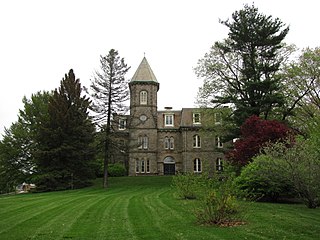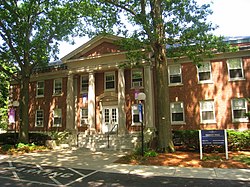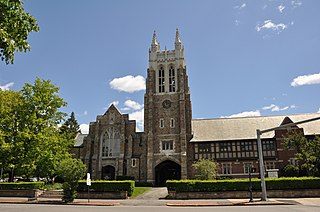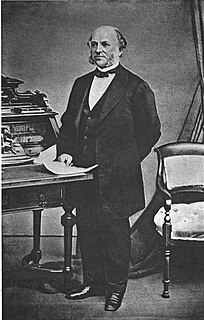Newton Theological Institution Historic District | |
Dabney Hall, built in 1937 | |
| Location | Roughly bounded by Braeland Ave., Ripley St. and Langley Rd., Bowen School Access Rd., and Cypress St., Newton, Massachusetts |
|---|---|
| Coordinates | 42°19′31″N71°11′25″W / 42.325278°N 71.190278°W Coordinates: 42°19′31″N71°11′25″W / 42.325278°N 71.190278°W |
| Area | 44.7 acres (18.1 ha) |
| Architectural style | Colonial Revival, Queen Anne, Italianate |
| MPS | Newton MRA |
| NRHP reference # | 86001749 [1] |
| Added to NRHP | September 4, 1986 |
The Newton Theological Institution Historic District is an historic district in the village of Newton Centre in Newton, Massachusetts. It encompasses not only the campus of the Newton Theological Institution, now known as the Andover Newton Theological School, but also a cluster of fashionable 19th century houses north of the campus, on Herrick Road and Chase and Cypress Streets. The school was the first outside educational institution in Newton. [2] The district was listed on the National Register of Historic Places in 1986. [1]

Historic districts in the United States are designated historic districts recognizing a group of buildings, properties, or sites by one of several entities on different levels as historically or architecturally significant. Buildings, structures, objects and sites within a historic district are normally divided into two categories, contributing and non-contributing. Districts greatly vary in size: some have hundreds of structures, while others have just a few.

Newton Centre is a village of Newton, Massachusetts, United States. The main commercial center of Newton Centre is a triangular area surrounding the intersections of Beacon Street, Centre Street, and Langley Road. It is the largest downtown area among all the villages of Newton, and serves as a large upscale shopping destination for the western suburbs of Boston. The Newton City Hall and War Memorial is located at 1000 Commonwealth Avenue in Newton Centre.

Newton is a suburban city in Middlesex County, Massachusetts, United States. It is approximately 7 miles (11 km) west of downtown Boston and is bordered by Boston's Brighton and West Roxbury neighborhoods to the east and south, respectively, and by the suburb of Brookline to the east, the suburbs of Watertown and Waltham to the north, and Weston, Wellesley and Needham to the west. Rather than having a single city center, Newton resembles a patchwork of thirteen villages. According to the 2010 U.S. Census, the population of Newton was 85,146, making it the eleventh largest city in the state.
Contents
The Andover Newton Theological School, the nation's oldest interdenominational religious seminary, was founded in 1931 by the merger of two other religious schools: the Newton Theological School, founded in 1825 as the nation's first Baptist seminary, and the Andover Theological Seminary, a Congregational seminary founded in 1807. The property in Newton Centre was purchased in the 1820s by the Baptists, who built the school's oldest surviving building, Farwell Hall, in 1828. Originally Federal in style, it was raised with a mansard roof in 1857. Colby Hall, separately listed on the National Register, was builtin 1866 to accommodate a growing student population. Sturtevant Hall (1873) was followed by Burgess Gymnasium (c. 1880) and Hills Library (1895) before the school merger took place. [2]

Colby Hall is an historic building on the campus of Andover Newton Theological School at 141 Herrick Road in the village of Newton Centre in Newton, Massachusetts. It was built in 1866 in a mixture of Second Empire and Romanesque styles. It was named for Gardner Colby (1810–79), who was treasurer of the school and also was the benefactor of Waterville College in Maine, which changed its name to Colby College in his honor. On January 30, 1978. it was added to the National Register of Historic Places.
Just north of the campus is a small residential area with high-quality mid-to-late 19th century houses, some that have association with the school. The house at 70 Chase Street is probably Newton's finest example of Second Empire styling; it was built for John Sanborn, a Boston merchant and politician. The 1906 Colonial Revival house at 120 Herrick Street may have been built by the school to house visiting teachers. 102 Herrick Street, a Queen Anne/Stick style house built c. 1883 was home to a clergyman. [2]





















